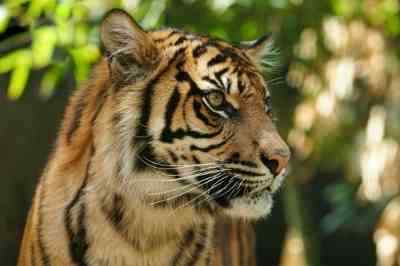Sumatran Tiger Relocated into New Home
“Putri” has a new home and is now safely roaming the forests of Sembilang National Park on Betet Island of South Sumatra, marking a moving success story of public-private partnership that saved the life of a rare Sumatran Tiger.
Putri, which means Princess in Indonesian, is a 7-year-old Sumatran Tiger that got caught up in a human-tiger conflict in South Sumatra Province on the island of Sumatra.
On Tuesday, after months of a painstaking process involving numerous local and central government organizations, wildlife and conservation experts, private companies and NGOs, the regal animal was set free in a new safe haven where she can continue to flourish and be part of the continued regeneration of the species.
“This is a marvelous success story for Indonesia. The Sumatran tiger is a national treasure and a symbol of our rich history,” said Zulkifli Hasan, the Republic of Indonesia’s Minister of Forestry.
[ Also Read: U.S. Postal Service to Help Save Vanishing Species ]Putri, a 75-kilo female tiger, was rescued in an area around PT Sumber Hijau Permai plantation forest in South Sumatra earlier this year.
The team transported the tiger to a safe location where Asia Pulp & Paper Group (APP) had built an 8x6x2 meter observation enclosure. While awaiting release Putri’s identity was recorded and she underwent medical checks performed by a team of veterinarians from Safari Park Indonesia.
Putri was found to be in good health for release, was well-cared for and was provided a diet of live prey while Bastoni’s team identified the potential location for the safe relocation.
Sembilang National Park, a 202,896-hectares national park officially established in 2003, was identified as an ideal relocation habitat for Putri. This was determined after the relocation survey team, headed by Bastoni together with the BKSDA team, found ample availability of live prey, abundance of fresh water and large dryland for tiger range.
Before the release, Putri was fitted with a GPS collar that allows her to be identified and monitored in the new habitat for safety.






